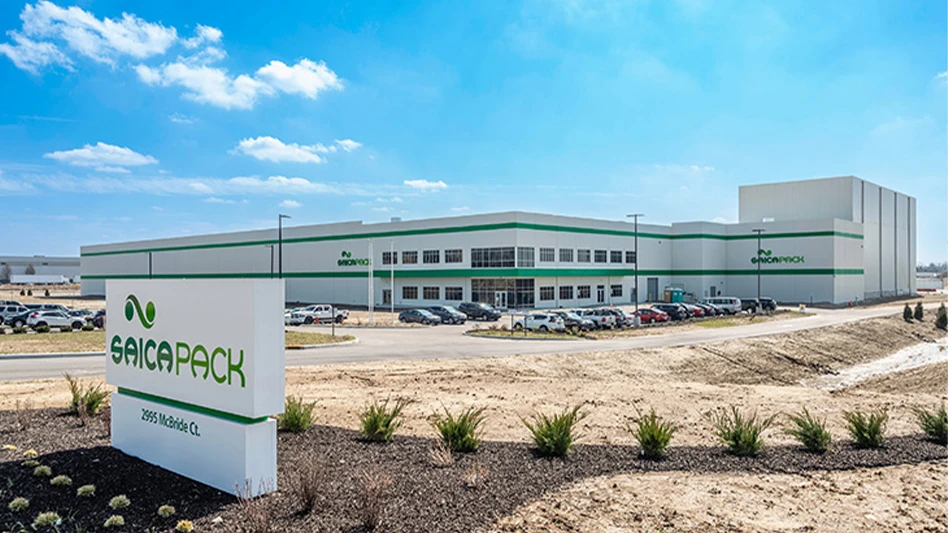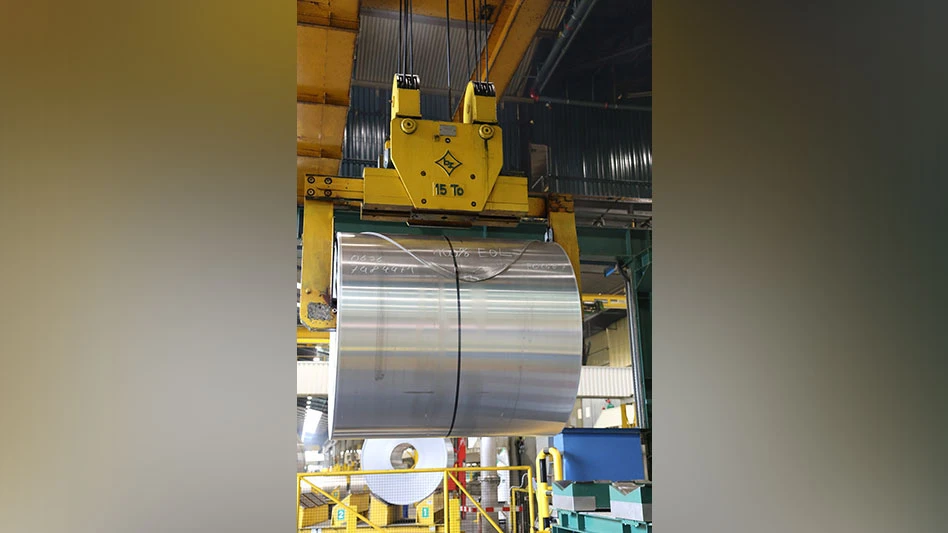Scrap Iron Hits Low-Altitude Balance
Ferrous scrap pricing exhibited relative stability in the January buying period, with mills in the United States on average paying within a few dollars per ton of what they paid in December.
National averages for mill spot prices for prompt industrial scrap, shredded scrap and No. 1 HMS all moved narrowly in the $9 to $12 per ton range, according to transaction pricing compiled by Management Science Associates Inc. (MSA) for its Raw Material Data Aggregation Service (RMDAS).
The stable pricing scenario meant mills paid on average $260 per ton for prompt industrial grades, $250 for shredded scrap and $201 for No. 1 Heavy Melting Steel (HMS).
Shredded scrap took the closest thing to a jump, with spot buyers paying on average $12 more per ton for what RMDAS defines as No. 2 Shredded Scrap (.17 or above copper content).
Regionally, the North Central/East region (which stretches north to south from New England to northeastern North Carolina and west to Ohio, Michigan, Kentucky and much of Indiana) witnessed the most price movement, with buyers paying from $11 to $15 per ton more, depending on the grade.
The South region (which includes the Gulf Coast states, Texas, Oklahoma, Arkansas, Georgia, Tennessee, most of the Carolinas and western Virginia) saw less price movement. The South also includes the only regional case of a grade losing value, with mills in the Southeast paying $6 less per ton on average for No. 1 HMS.
A scrap recycler in the Northeast reports heavy January buying in the export market, particularly from Turkey, which may have helped boost pricing in that region. "We’re having to export a lot of material since the domestic market is so weak," he comments "We’ve loaded four barges with about 100,000 tons of metal headed for Turkey."
An exporter in the Mid-Atlantic region says buyers in India and some other markets are still buying containerized ferrous scrap, but the Chinese market remains quiet. "I’m not convinced that there will be a lot more melting going on over there immediately after the Chinese New Year, but that combined with a $600 billion infrastructure program could boost scrap demand," says the exporter.
Domestic steelmakers were especially quiet during the holiday season, with the American Iron & Steel Institute (AISI) calculating a mill capacity utilization rate of just 33.5 percent for the week that ended Dec. 27.
As tepid as is demand, a dwindling of supply has helped provide a lower-level form of equilibrium to the market. Supply from industrial sources has declined considerably, and a recycler in the Southeast says there is less generation from formerly reliable demolition sources.
The recycler in the Northeast says a great deal of work also has to go into luring retail scrap across the scale. "We’re not waiting for scrap," he remarks. "You have to do more things [and] do whatever the customer needs right now. When it was $600 per ton, it automatically came in."
Steel Imports End Year Down 5 Percent
Based on the Commerce Department’s most recent Steel Import Monitoring and Analysis data, the American Iron and Steel Institute has reported that steel import permit applications for December 2008 totaled slightly more than 2 million tons, a 15 percent drop from the previous month. Import permit tonnage for finished steel in December was 1.78 million tons, a 13 percent decrease from November.
In December, the largest finished steel import permit applications for offshore countries were for China (488,000 net tons), India (132,000 net tons), South Korea, (102,000 net tons) and Japan (94,000 net tons).
Chinese permit tonnage was more than Canada and Mexico combined, and more than three times that of any other offshore supplier. While permit tonnage for Chinese steel decreased 17 percent in December vs. November, this was 27 percent of total SIMA finished steel permit tonnage. Moreover, imports of Chinese finished steel during the fourth quarter would annualize at 7.2 million tons; 1.7 million tons higher than the record amount of United States’ steel imports from China set in 2006.
Finished steel import products that registered large increases in December vs. November include Heavy Structural Shapes (up 52 percent) and Cold Finished Bars (up 16 percent). Import products with significant increases for full year 2008 vs. 2007 include Oil Country Goods (up 103 percent) and Hot Rolled Bars (up 12 percent).
WRAP Provides Guidelines for Producing Rubberized Asphalt Roads
Research conducted by the U.K.-based Waste & Resources Action Programme demonstrates that rubberized asphalt for road surfacing can be successfully produced using certain combinations of U.K.-sourced materials, including rubber from used tires.
This modified material has been found to offer positive benefits when compared to conventional asphalt mixtures—but despite being used for highway construction in other countries for many years, the material has never been applied in the U.K.
In addition to providing a sustainable outlet for used tires, rubberized asphalt is also said to offer a selection of desirable qualities, including increased durability and crack reduction.
Initially, researchers analyzed available information. From this point, a series of rubberized asphalt and control mixes were manufactured using a wide range of materials accessible in the U.K. The materials used included Venezuelan and Middle Eastern bitumen and recycled tire rubber crumb of different sized grades—recovered from both truck and car tires—along with limestone, granite and gritstone as the aggregate material.
Ian Walsh from Jacobs (U.K.) Ltd., an advisor to WRAP during the research, adds: "These relts prove—for the first time in the U.K.—that it is possible to blend recycled tire rubber and bitumen to create a useable, valuable binder. This alone is a very significant finding. But the results of the testing go so much further, demonstrating as well that different types of bitumen and recycled rubber can be used to create a wide range of mixtures that have been proven suitable for use as both surface and binder courses in highways construction."
Demand for Cement in China to Rise
Demand for cement in China is forecast to rise 6 percent per year through 2012 to 1.8 billion metric tons, according to a report released by Cleveland-based market research firm the Freedonia Group.
Growth will be driven by rising, but decelerating, construction expenditures in China. Further advances in cement manufacturing technology will also help stimulate sales by improving the quality of the product, according to the study. Blended cements will account for about 90 percent of total sales in 2012.
Construction contractors will continue to be the largest market for cement, accounting for 32 percent of total demand in 2012. However, the ready-mix concrete market will see the strongest growth, advancing 9.8 percent per year through 2012. Gains will benefit from government regulations banning on-site concrete and mortar mixing. Demand for cement used in concrete products is expected to grow 5.4 percent per year through 2012, driven by the growing popularity of precast concrete with many contractors.
Nonresidential construction will continue to represent the largest end use for cement, benefiting from ongoing industrialization in China. However, demand for cement in non-building construction will outpace other construction categories, rising 7.3 percent per year through 2012. The study is available for purchase at www.freedoniagroup.com.
New York Using RAP to Fill Potholes
The office of Mayor Michael Bloomberg and the New York DOT have publicized that they are using recycled asphalt pavement (RAP) to fill potholes.
Since mid-December 2008, crews have filled more than 20,000 potholes across the city, with more than 80,000 filled in the last six months.
New York is using RAP that is a 40 percent recycled asphalt product. It is produced at the DOT’s Brooklyn asphalt plant.
By using RAP, 174,000 tons of paving material was diverted from landfills in one year, according to a press release from the mayor’s office.

Explore the March 2009 Issue
Check out more from this issue and find your next story to read.
Latest from Recycling Today
- Green Cubes unveils forklift battery line
- Rebar association points to trade turmoil
- LumiCup offers single-use plastic alternative
- European project yields recycled-content ABS
- ICM to host colocated events in Shanghai
- Astera runs into NIMBY concerns in Colorado
- ReMA opposes European efforts seeking export restrictions for recyclables
- Fresh Perspective: Raj Bagaria





